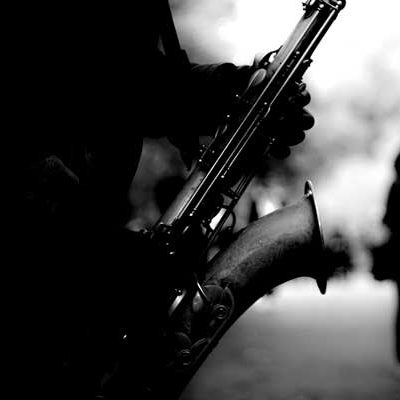A balmy sea-scented breeze wafted over me as I sat on the pavement beside the Fringe Club in Hong Kong Central District. It was well past midnight but rather than worrying about how we would get back home to Shatin in the New Territories, given that all public transport had closed, my mind kept revolving around the explosive music we'd just experienced. Experience is a word I use consciously, rather than any other verb associated with listening as the music we had just witnessed had wrapped itself around all my senses, not just the aural. It was the late ’80s and I had just been to my first jazz concert.
The “Hook
Growing up in India, I had been immersed in Indian classical dance and music. I had little exposure to Western classical music and even less to other forms such as jazz. In all honesty, they seemed a little alien to me - though I could appreciate their beauty, I had made no conscious attempt to understand their nuances, technique or study their history.
In the acquisition of new knowledge, educators often speak of "Hooks". One can acquire a new set of understandings if it can be hooked†to old understandings that already exist. For a child learning English as an additional language, for example, the process is accelerated if the new language is pegged on to the languages the child already has. I had lacked this hook while trying to appreciate jazz in the past but that evening’s performance gifted it to me.
Improvisation
Similar to Indian classical dance and music, one of the defining features of jazz is improvisation. A performer is free to interpret, ornament and embellish a composition. This freedom is said to be the influence of earlier forms of folk music on jazz such as blues which arose from the work songs and field-hollers of African-American plantation slaves. Witnessing this key element that evening in Hong Kong brought to mind the endless variations that a dancer could impart to a single line in a Bharatanatyam varnam or a Kuchipudi javali. Depending on the mood of the audience or interactions between the musicians and the dancer, no two performances of the same composition need be the same.
Artistry and Identity
Much of this of course depends upon the artistry and virtuosity of the performer. In the Indian dramatic tradition encoded in the Natyashastra, a performance is a take-off from the text to an interior journey of visualization, imagination and reflection; it is an interpretative act, a continuation of the creative activity contained in the text, script or composition. The complex relationship between text and performance came to be known as performance script. Contemporary scholars refer to this as inter-textuality. While the onus of realizing the performance text is on the performer, aided by learnt techniques and inherited models, the audiences carry their own private or individual matching model to a performance event. These spectator models contribute to the evolution of the final or collective model of the performance text.
Throughout its long history, from early Dixieland to the swing era of the 1920s-’40s, from the 1940s bebop to avant jazz in the 1950s and ’60s, jazz rock fusion in the 1970s and smooth jazz in the 1980s, jazz has embraced a similar take-off. Every performance is intimately connected to the identity and imagination of the artistes. There is constant give and take, between artistes in an ensemble as also between performers and audience.
Social Energy
Stephen Greenblatt refers to the “social energy†encoded in certain performance texts that allow them to live long past the originary moment. Social energy is manifested in the “capacity of certain verbal, aural and visual traces to produce, shape and organize collective physical and mental experiencesâ€. In its aesthetic modes, social energy must have a minimum predictability - enough to make simple repetitions possible and a minimal range - enough to reach out beyond a single creator or consumer. Social energy is also characterized by minimal adaptability - enough to enable surviving some of the constant changes in social circumstance and cultural value that make ordinary utterances evanescent. Whereas most collective expressions moved from their original setting to a new place or time are dead on arrival, the social energy in certain works of art continue to generate the illusion of life for centuries. Greenblatt proposes a subtle, elusive set of exchanges, a jostling of competing representations, a network of trades and tradeoffs as negotiations through which works of art obtain and amplify such powerful energy. These negotiations and re-negotiations abound in the history of Indian classical dance and music as much as they do in the history of jazz.


Leave a reply